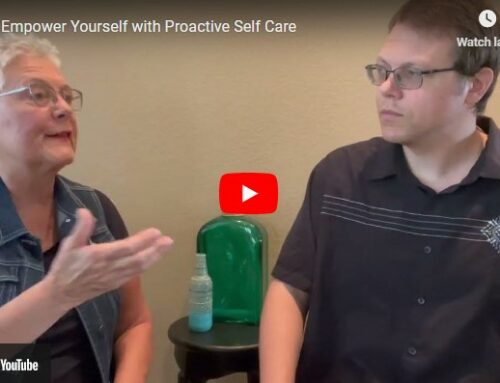 by Dr. Tina Marcantel
by Dr. Tina Marcantel
Here are five ways to get the most out of a working relationship with your physician. Dr. Tina Marcantel is a naturopathic physician in Gilbert, Arizona, who also serves the cities of Mesa, Chandler, Queen Creek, Scottsdale, Apache Junction, Tempe, and the greater Phoenix area.
A key concept to a successful patient/doctor relationship is active teamwork. I always tell my patients that, “You will help me to help you.” Here are five ways to get the most out of a working relationship with your physician.
- Do your homework before choosing a doctor. Read books and research your symptoms and signs that your body is giving you. Look at the doctor’s website to get an idea of what their medical specialties or interests are and determine if they are a good “fit” for you. Explore your options and trust your “gut feelings” when choosing a doctor. Good communication and reasonable expectations from both sides from the first visit on will go a long way toward achieving a successful treatment plan for optimal health.
- Specifically state your health concerns in order of priority when you visit. Your body is intelligent and will give you indications when something is wrong. You know your body better than anyone, so pay attention to what it’s telling you and then communicate that as clearly as possible to your doctor. This can be used to deal with immediate symptoms, but it can also be very useful in getting to the root causes of problems. Also, I know that many of the patients that see me are seeing other doctors, as well. That can mean they’re taking several prescribed medications from several different doctors. Make sure the doctor knows your diagnosis and why you’re taking medications and inform them of everything you are taking—prescription, nonprescription, or natural supplements—to avoid overdosing or unwanted interactions.
- Be an active participant in your own care plan. Your doctor is there to assist you in your healing process by offering his or her years of clinical experience, research, and medical training, but you are ultimately the captain of your ship. That means being compliant with following the treatment plan you and your doctor have agreed on, but it may also involve long-term lifestyle changes. It’s up to you to do your part in bringing balance to your life through exercise, proper diet, and a proper mental attitude. We all need to be aware of those things, people, or circumstances that drain us of our energy and cause unnecessary stress that can exacerbate our health problems. It’s true that we can’t always eliminate those “energy suckers” in our lives, but we can learn to choose positive ways to respond to them rather than allowing them to control us with negative thoughts and feelings.
- Be your own patient advocate. You need to feel comfortable with the treatment plan that your doctor offers you—and, hopefully, it’s not just another prescription! It’s your body and you get the final say in what treatment you choose. A patient becomes self-empowered when they realize that the doctor guided them but it was they who made the conscious decisions that led to a healthier and happier life. Along those lines, be sure to communicate to your doctor what is working and what is not working. Especially in cases of long-term health problems it’s often necessary to try several approaches or make changes to your existing treatment before finding the solution you need; help your doctor work with you to explore those options. I’ve found that a very effective tool that promotes good follow-up care is having my patients e-mail me updates about their progress.
- Have realistic expectations about treatment and outcomes. If you go to a doctor with an acute condition such as a broken finger you generally know what you can expect. If the doctor is covered by your insurance in a managed care system you will make a co-payment and the doctor’s office will bill your insurance plan for the treatment. You will leave with a splint on your finger and a prognosis of X number of weeks for a complete healing. Visiting that same doctor for a chronic condition such as hormonal imbalances or fibromyalgia is a different story. Here is a summary of the experience that many of my patients have shared with me about seeing their primary care physician within a managed care system:
Patient: Fix me, Doctor. Here’s my insurance card.
Doctor: I don’t have time. Here’s your prescription.
Chronic conditions generally take time-intensive visits to effectively treat. These visits are often not covered by traditional insurance plans, and the constraints of managed care mean that doctors cannot devote the necessary time to deal with root causes. People who seek help outside the “traditional” insurance system realize that by choosing to pay out-of-pocket for visits, they are able to choose a doctor who has the time to work with them to deal with chronic complaints. That extra time spent with the doctor can also help prevent the misdiagnosis of a condition and save time, money, and frustration in the long run when bringing a patient into health. Even so, remember that chronic conditions often take years to develop and will sometimes take some time to reverse, especially when using more natural therapies.
By being properly prepared before your visit and taking responsibility for and committing to the plan of care you and your doctor agree on, you will get the best results from your patient-doctor relationship.





